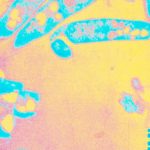Link to Pubmed [PMID] – 36853675
Link to DOI – 10.1016/j.xpro.2023.102062
STAR Protoc 2023 Jan; 4(1): 102062
Mycobacterium tuberculosis (Mtb) hijacks host-derived fatty acids (FAs) to sustain its intracellular growth inside host cells. Here, we present a click-chemistry-based protocol to assess FA import by Mtb in axenic culture or inside mouse macrophages. We describe the use of alkyne analogs of natural FAs as an alternative to structurally altered fluorescent derivatives or hazardous radiolabeled FAs. We also detail quantitative analyses of FA uptake at single bacterial or host cell level by flow cytometry and confocal fluorescence microscopy. For complete details on the use and execution of this protocol, please refer to Laval et al. (2021).1.

